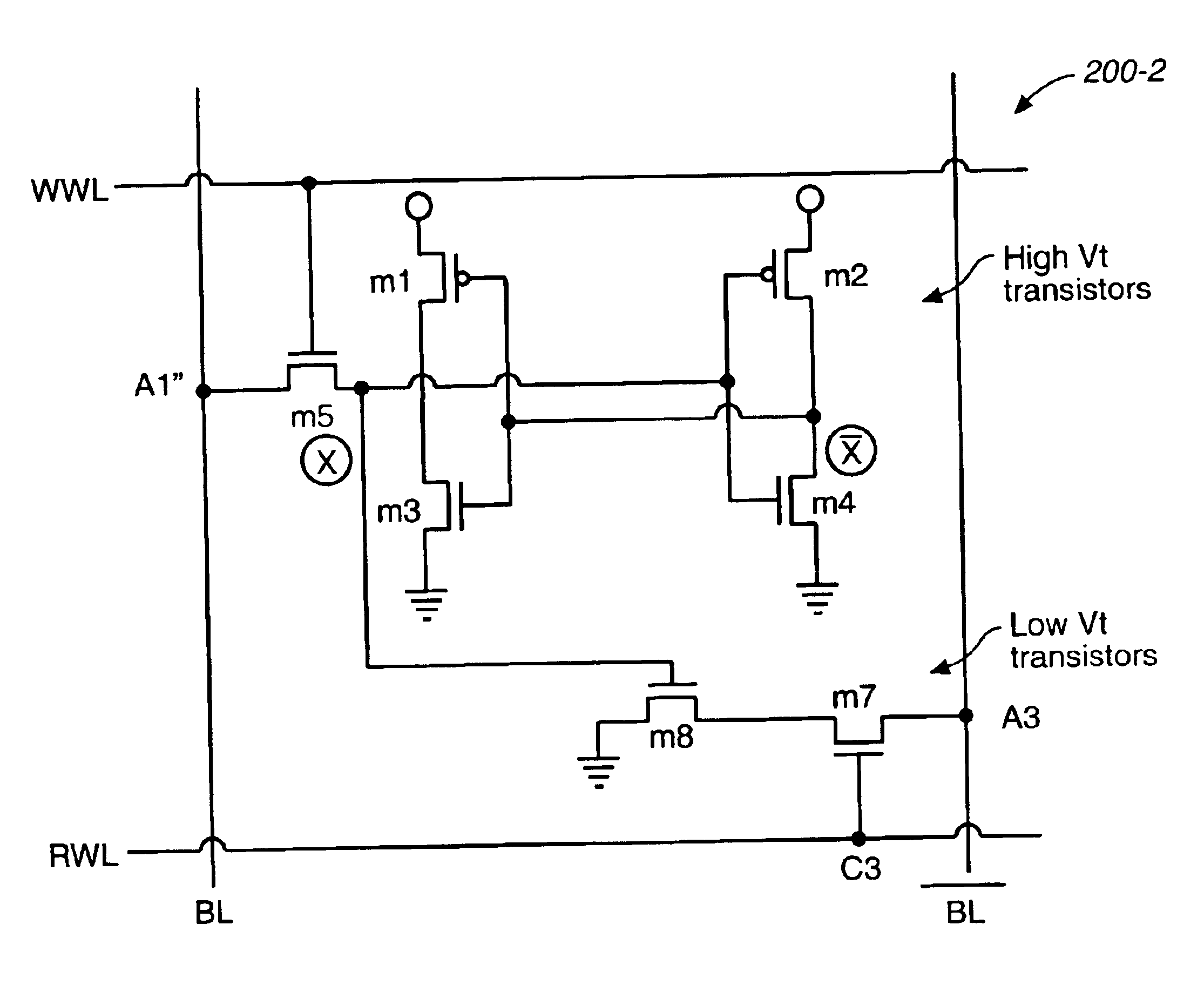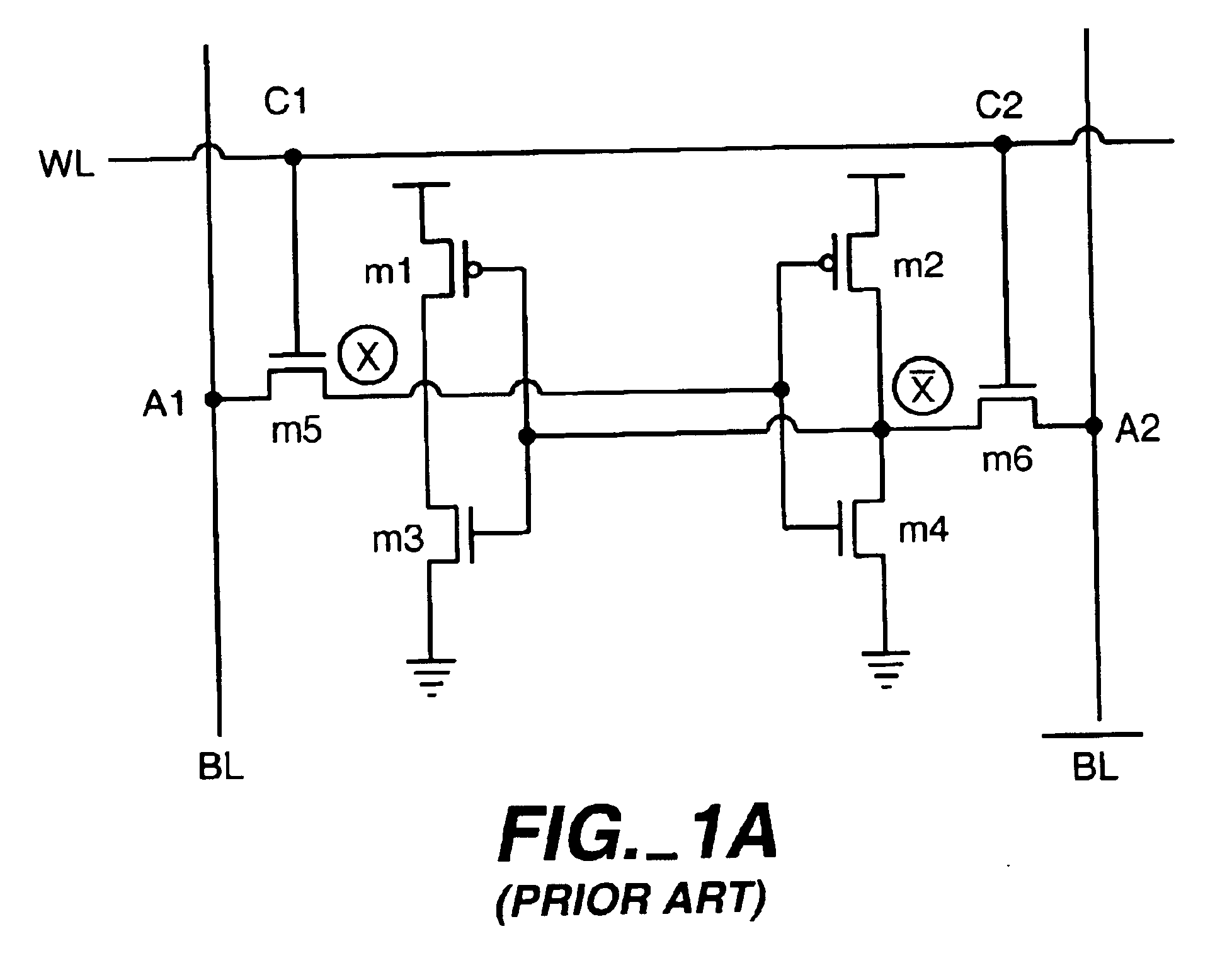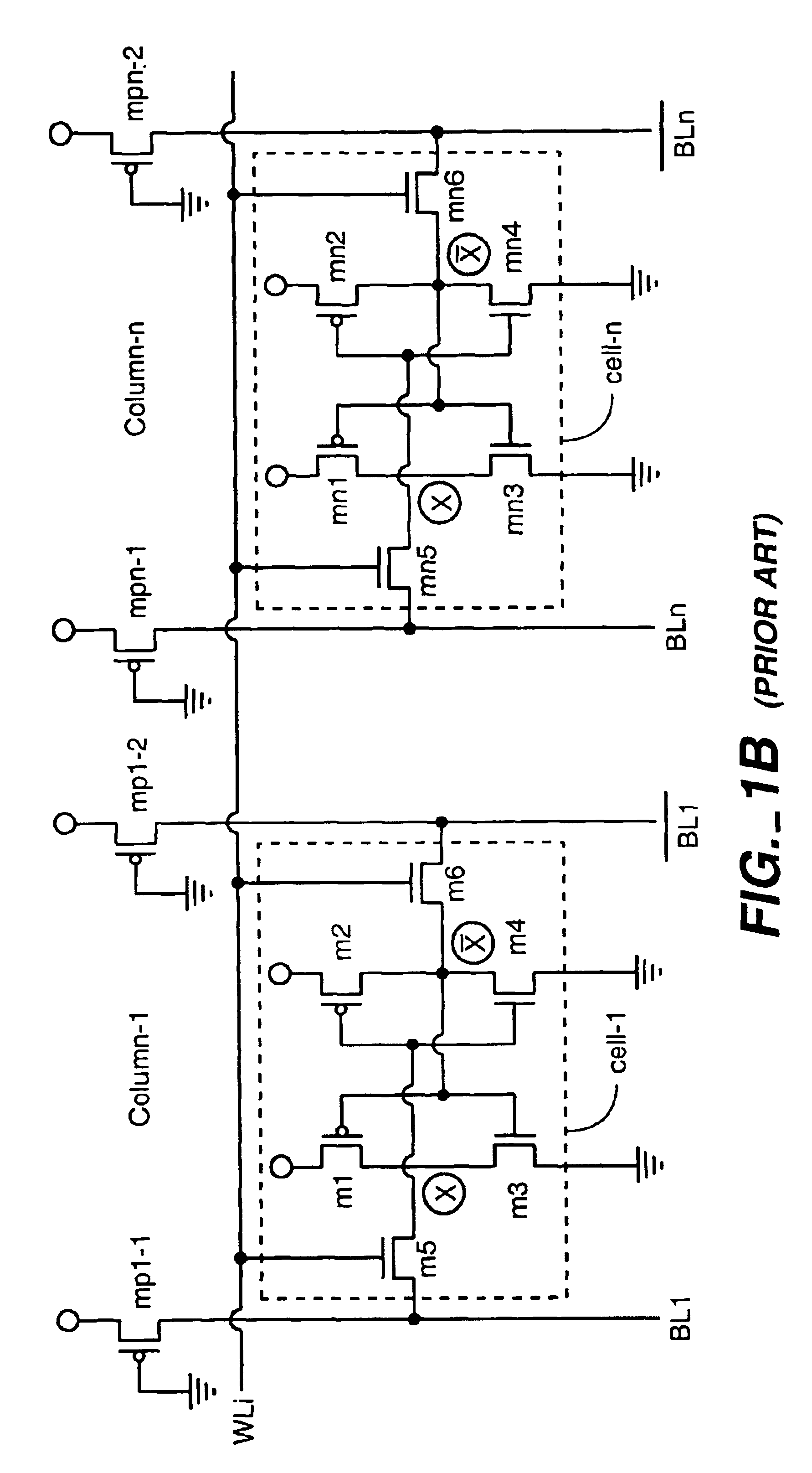Low-power high-performance storage circuitry
a storage circuit and low-power technology, applied in the field of integrated circuits, can solve the problems of affecting battery life, not being able to have devices such as cell phones, personal digital assistants (pdas), palm-top computers, etc., and prolonging battery li
- Summary
- Abstract
- Description
- Claims
- Application Information
AI Technical Summary
Benefits of technology
Problems solved by technology
Method used
Image
Examples
first embodiment
[0043]FIG. 3 is an illustrative circuit diagram of an integrated circuit data storage cell 100 in accordance with the invention. The topology and overall operation of the inventive data storage cell 100 of FIG. 3 is like that of the earlier SRAM cell of FIG. 1A. Transistors shown in FIG. 3 that correspond to transistors of FIG. 1A are labeled with reference numerals that are identical to the reference numerals used in FIG. 1A and that are primed. Therefore, reference can be made to the above description of the prior SRAM cell of FIG. 1A to understand the structure and operation of the new data storage cell of FIG. 3.
[0044]There are important differences between the novel data storage cell 100 of FIG. 3 and the earlier SRAM cell of FIG. 1A. First, the data latching transistors (m1′-m4′) of the novel data storage cell 100 are implemented as high threshold voltage (high Vt) transistors. Second, the access transistors (m5′-m6′) of the novel storage cell 100 are implemented as low thresh...
second embodiment
[0045]FIG. 4A is an illustrative circuit diagram of an integrated circuit data storage cell 200 in accordance with the invention. Some portions of the topology and operation of the inventive data storage cell 200 of FIG. 4A are identical to corresponding portions of the novel data storage cell 100 of FIG. 3. Transistors shown in FIG. 4A that correspond to transistors of FIG. 3 are labeled with reference numerals that are identical to the reference numerals used in FIG. 3 and that are double primed.
[0046]The data storage cell 200 includes three sections. A storage circuitry section includes transistors m1″-m4″. A write access circuitry section includes transistors m5″ and m6″. A read access circuitry section includes transistors m7 and m8. Storage transistors m1″-m4″ and write access transistors m5″-m6″ are high Vt transistors. Read access transistors m7-m8 are low Vt transistors. Leakage current is reduced through the use of high Vt transistors in the storage circuitry section and i...
case 3
[0069]Case 3 can be particularly useful in reducing power consumption. For example, when a write word line is enabled, specifically a pulsed write wordline signal is applied, all write transistors are turned on and BL (or BL-bar) is discharged through a write transistor and the cell transistor. For example in FIG. 4A, when X-bar is low, BL-bar is discharged through m6 and m4. The discharged BL-bar should be precharged before the next read operation. The extent of BL-bar discharging depends on the pulse width and the threshold voltage of the write transistor. The larger the pulse width, the larger BL-bar discharging. And the higher the threshold voltage of the write transistor, the smaller BL-bar discharging. When the threshold voltage of the write transistor is high, BL-bar is discharged less due to smaller current driving capability of the transistor. Therefore, a high Vt transistor is used for the write transistor, BL (or BL-bar) is less discharged for the given pulse width, and t...
PUM
 Login to View More
Login to View More Abstract
Description
Claims
Application Information
 Login to View More
Login to View More - R&D
- Intellectual Property
- Life Sciences
- Materials
- Tech Scout
- Unparalleled Data Quality
- Higher Quality Content
- 60% Fewer Hallucinations
Browse by: Latest US Patents, China's latest patents, Technical Efficacy Thesaurus, Application Domain, Technology Topic, Popular Technical Reports.
© 2025 PatSnap. All rights reserved.Legal|Privacy policy|Modern Slavery Act Transparency Statement|Sitemap|About US| Contact US: help@patsnap.com



